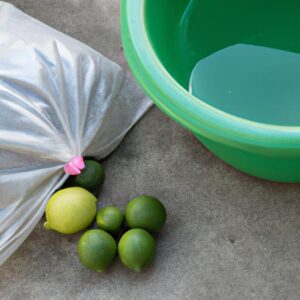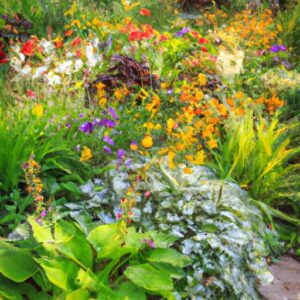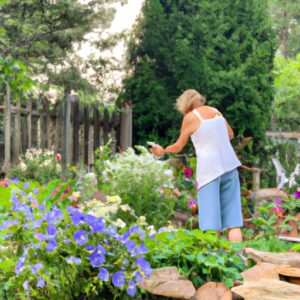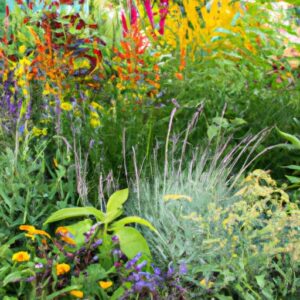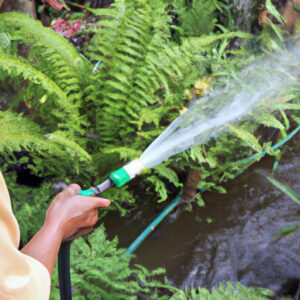Introduction
Gardening zones play a vital role in determining what plants thrive in specific regions. Whether you’re a seasoned gardener or just starting out, understanding your gardening zone is crucial for successful cultivation. In this article, let’s explore the gardening zone of Dallas, Texas, and discover the unique characteristics that make it an intriguing location for gardening enthusiasts like you and me.
Importance of Gardening Zones
Before we delve into the specifics of Dallas, Texas, let’s grasp the significance of gardening zones. These zones provide valuable information about climate conditions, average temperatures, and frost dates, enabling gardeners to select the most suitable plants for their area. By understanding your gardening zone, you can optimize your time and effort, ensuring that your plants thrive in the environment they are meant to flourish in.
Dallas, Texas: An Enchanting Gardening Location
Now that we appreciate the significance of gardening zones, let’s turn our attention to Dallas, Texas. Known for its vibrant culture and bustling city life, Dallas also offers a unique gardening experience. Nestled in the southern region of the United States, Dallas boasts a warm and humid climate, making it an ideal location for a diverse range of plants.
With its long growing season and ample sunshine, Dallas presents an exciting opportunity for gardeners to indulge in their passion. From vibrant flowers to succulent vegetables, the gardening possibilities are endless in this Texan city.
Stay tuned as we journey through the specifics of Dallas’ gardening zone, exploring the climate, soil conditions, and suitable plant varieties that thrive in this captivating region. Whether you’re a seasoned Dallas gardener or contemplating starting your gardening venture in this area, this article will equip you with the knowledge and insights needed to create a flourishing garden in Dallas, Texas.
Understanding Gardening Zones
Definition and Purpose of Gardening Zones
Gardening zones, also known as hardiness zones, are geographical regions that categorize areas based on their climate and growing conditions. These zones are primarily determined by average minimum winter temperatures and help gardeners identify which plants are most likely to thrive in their specific region.
Each gardening zone is assigned a numerical value, typically ranging from 1 to 13, with Zone 1 being the coldest and Zone 13 being the hottest. These zones act as a guide, providing valuable information on what plants can withstand the unique weather conditions of a particular area.
Importance of Knowing Your Gardening Zone
Knowing your gardening zone is essential for cultivating a successful garden. By understanding the specific characteristics of your zone, you can select plants that are well-suited to the local climate, soil type, and average temperature range. This knowledge helps you avoid wasting time, money, and effort on plants that are unlikely to thrive in your area.
Furthermore, gardening zones provide valuable insights into frost dates, which are crucial for determining when to plant and harvest crops. By aligning your gardening activities with the recommended timing for your zone, you can optimize your plant’s growth and yield.
Moreover, understanding your gardening zone allows you to make informed decisions when it comes to plant care, pest management, and soil amendments. Different zones may have varying challenges, such as high humidity, drought conditions, or specific pests, and being aware of these factors empowers you to take appropriate measures to ensure the health and vitality of your garden.
In the following sections, we will explore in detail the factors that determine the gardening zone in Dallas, Texas, and the specific characteristics that make it a unique and exciting location for gardening enthusiasts. So, let’s dive in and uncover the secrets of gardening success in Dallas, Texas, and its corresponding gardening zone!
Determining the Gardening Zone in Dallas, Texas
Factors Affecting Gardening Zones in Dallas, Texas
When it comes to determining the gardening zone in Dallas, Texas, several factors come into play. One of the primary factors is the region’s climate, which influences the types of plants that can thrive in the area. Dallas experiences a humid subtropical climate, characterized by hot summers and mild winters, which significantly impacts the gardening zone.
Additionally, the topography and elevation of Dallas can affect microclimates within the city. Certain areas may have slightly different temperature ranges or soil conditions, leading to variations within the gardening zones. It’s essential to consider these factors when determining the specific gardening zone for your location in Dallas.
Resources to Determine the Gardening Zone in Dallas, Texas
Fortunately, there are resources available to help you accurately determine the gardening zone in Dallas, Texas. The United States Department of Agriculture (USDA) has developed a comprehensive Plant Hardiness Zone Map, which divides the country into distinct zones based on the average minimum winter temperatures. This map serves as a valuable tool for gardeners to identify their gardening zone and select appropriate plants accordingly.
Additionally, local agricultural extension offices and gardening communities in Dallas can provide valuable insights and guidance. These organizations often have region-specific information, considering factors like soil conditions and local climate variations, helping you make informed decisions about your garden.
Importance of Accurately Determining the Gardening Zone in Dallas, Texas
Accurately determining your gardening zone in Dallas, Texas is of utmost importance for successful gardening. Planting species that are not suitable for your specific zone can lead to disappointment and wasted efforts. By understanding your gardening zone, you can select plants that are more likely to thrive in the local climate and soil conditions, maximizing your chances of a flourishing garden.
Moreover, knowing your gardening zone helps you plan your planting and harvesting schedules more effectively. It allows you to align your gardening activities with the appropriate seasons, ensuring optimal growth and productivity of your plants.
In the next section, we will explore the unique characteristics of Dallas, Texas’ gardening zone, including its climate, soil conditions, and suitable plant varieties. So, let’s dive in and discover the secrets to successful gardening in this enchanting Texan city.
Dallas, Texas Gardening Zone Characteristics
Climate and Weather Patterns in Dallas, Texas
When it comes to gardening, understanding the climate and weather patterns of a region is crucial. In Dallas, Texas, gardeners are greeted with a subtropical climate, characterized by hot summers and mild winters. The average annual temperature ranges from 65°F (18°C) to 78°F (26°C), providing an excellent environment for a variety of plants to thrive.
During the summer months, temperatures can soar, reaching highs of 100°F (38°C) or more. It’s important to select heat-tolerant plants that can withstand these scorching temperatures. Some popular options include sunflowers, zinnias, and marigolds, which add a vibrant touch to your garden while enduring the summer heat.
In contrast, winters in Dallas are relatively mild, with average temperatures ranging from 38°F (3°C) to 58°F (14°C). While frost and occasional freezes can occur, they are typically short-lived. This allows for a longer growing season compared to other regions. Gardeners can take advantage of this by planting cool-season crops like lettuce, kale, and broccoli during the winter months.
Soil Conditions and Types Prevalent in Dallas, Texas
Dallas, Texas, is blessed with a diverse range of soil types, providing opportunities for various gardening endeavors. The most common soil types in the area include clay, sandy loam, and blackland prairie soil. Each type has its own characteristics, influencing water drainage, nutrient retention, and overall plant growth.
Clay soil, found in many parts of Dallas, tends to retain moisture, making it suitable for plants that require consistent hydration. However, it can become compacted and may require additional amendments, such as organic matter, to improve its structure and drainage.
Sandy loam soil, on the other hand, drains more readily and has excellent fertility. It is a popular choice for gardening, as it allows for good root development and aeration. For gardeners working with sandy loam soil, irrigation practices should focus on maintaining adequate moisture levels.
Blackland prairie soil, prevalent in the eastern parts of Dallas, is rich in organic matter and nutrients. This fertile soil type is well-suited for a wide range of plants, including vegetables and ornamentals. Its ability to retain moisture makes it an ideal choice for plantings that benefit from consistent hydration.
Suitable Plant Varieties for Dallas, Texas Gardening Zone
The unique climate and soil conditions of Dallas, Texas, offer a plethora of plant options for enthusiastic gardeners. When selecting plants for your Dallas garden, consider native and adapted species that are well-suited to the region’s conditions.
For flowering plants, consider vibrant options like lantanas, salvias, and black-eyed Susans. These hardy perennials not only add color to your garden but also attract pollinators, enhancing the overall biodiversity of your outdoor space.
When it comes to vegetables, Dallas gardeners can enjoy a wide variety of options. Tomatoes, peppers, squash, and beans are just a few examples of vegetables that thrive in the warm and sunny climate of Dallas. Additionally, herbs like basil, rosemary, and thyme can be grown year-round, adding flavor and freshness to your culinary creations.
By selecting plants that are well-adapted to the Dallas gardening zone, you can create a flourishing garden that thrives in harmony with the region’s climate and soil conditions. Stay tuned as we explore valuable tips and techniques to help you maintain a successful garden in Dallas, Texas.
Tips and Techniques for Gardening in Dallas, Texas Gardening Zone
A. Selecting and Planting Appropriate Plants for the Gardening Zone
Choosing the right plants for your Dallas, Texas gardening zone is essential for a thriving garden. Consider the following tips when selecting and planting:
-
Research plant hardiness: Look for plants that are recommended for Zone 8a, which is the gardening zone for Dallas, Texas. These plants are better equipped to tolerate the region’s climate and temperature fluctuations.
-
Consider native plants: Native plants have adapted to the local environment, making them well-suited for Dallas’ gardening zone. They require less maintenance and are often more resistant to pests and diseases.
-
Factor in soil conditions: Dallas has a mix of soil types, ranging from clay to sandy loam. Ensure you choose plants that can thrive in the specific soil conditions of your garden. Amending the soil with organic matter can also improve its fertility and drainage.
B. Tips for Maintaining a Successful Garden in Dallas, Texas
To ensure a flourishing garden in Dallas, Texas, keep the following tips in mind:
-
Water wisely: Dallas experiences hot summers, so proper watering is crucial. Deep watering encourages plants to develop deep root systems, making them more resilient to drought. Consider using drip irrigation or soaker hoses to minimize water loss through evaporation.
-
Mulch for moisture retention: Apply a layer of organic mulch around your plants to retain moisture, regulate soil temperature, and suppress weed growth. Mulch also adds valuable nutrients to the soil as it breaks down.
-
Practice proper pest control: Dallas is home to various pests, such as aphids, spider mites, and whiteflies. Regularly inspect your plants for signs of infestation and employ organic pest control methods to protect your garden without harming beneficial insects.
C. Common Challenges and Solutions for Gardening in Dallas, Texas
Gardening in Dallas, Texas comes with its fair share of challenges. Here are some common issues and their solutions:
-
Extreme heat: Dallas summers can bring scorching temperatures. Provide shade for sensitive plants during the hottest parts of the day and consider using shade cloth or row covers to protect them.
-
Unpredictable weather: Dallas can experience sudden temperature drops and occasional late frosts. Stay prepared by covering vulnerable plants with frost blankets or moving potted plants indoors during such events.
-
Soil management: Dallas soil can be heavy clay or sandy, which may require amendments for optimal plant growth. Test your soil regularly and amend it with organic matter, such as compost, to improve its texture, fertility, and drainage.
By implementing these tips and techniques, you can navigate the unique challenges of gardening in Dallas, Texas, and create a vibrant and thriving garden that brings joy and beauty to your surroundings.
Conclusion
As we conclude our exploration of the gardening zone in Dallas, Texas, it is evident that understanding your gardening zone is essential for successful cultivation. Dallas offers a unique gardening experience with its warm climate, ample sunshine, and diverse plant varieties that thrive in the region.
By accurately determining your gardening zone in Dallas, you can select the most suitable plants, ensure proper care, and overcome any challenges that may arise. Remember to consider factors such as climate, soil conditions, and suitable plant varieties when planning your garden in Dallas.
Gardening in Dallas, Texas allows you to unleash your creativity and nurture a vibrant and thriving garden. Embrace the opportunity to grow a wide range of plants, from colorful flowers to delicious vegetables.
So, whether you’re a seasoned gardener or just starting out, Dallas, Texas offers an enchanting gardening experience with endless possibilities. Harness the power of your gardening zone knowledge, and let your garden flourish in the vibrant city of Dallas.
Now, armed with the insights and tips provided in this article, go forth and create a remarkable garden that flourishes in Dallas, Texas. Happy gardening!
